Region#3 Country#12: Argentina
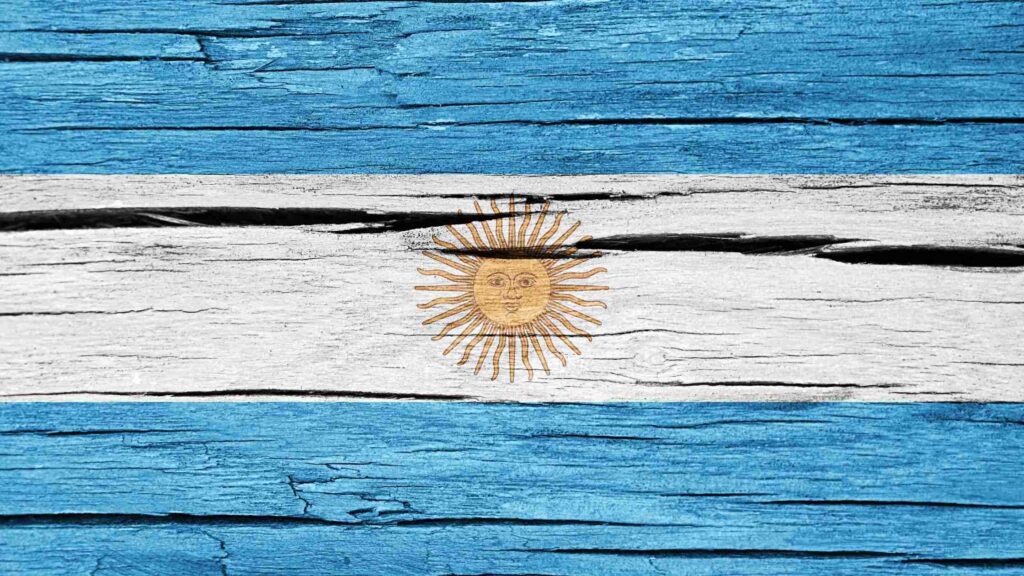
Going into this journey I had mental images of all the countries we are visiting. Yet, with the journey taking place, each of them holds surprises. From each I emerge with a very different picture that the one I carried in. Argentina is immediately not an exception.
The first thing that makes these countries so surprising is going in with homogenous images of the countries we are visiting. In reality, all but the tiniest nations are comprised of diverse landscapes; unique geological, geographical and cultural places that may not resemble our image of a country at all. For Peru we think of the high Andes and tropical rainforests. Instead we passed thru thousands of kilometers of desert and even our forays into the high mountains were on the arid western side of the Andes. The deserts we went thru in Chile were not a surprise. However, had we gone further south we would have hit a much different place than we imagine.

Argentina is a place that existed in my mind as great grasslands, filled with vast cattle ranches… the Pampas. In reality, only the northeastern part of Argentina is the Pampas. The border with Chile runs along the summit of the Andes, meaning that much of western Argentina is the eastern half of the Andes. And these are not the mountains clothed in tropical rain forests found further north in Peru. In Argentina the east side of the Andes is as arid as the west. Argentina does have rain forests, as does Chile… they are cold rain forests in the southern reaches of western South America. Argentina, for the most part, has relatively low rainfall, even in the Pampas. And most of the land we are going to cross will be a cold, sparsely inhabited desert. We will barely clip the edge of the Pampas. In reality Uruguay and Brazil have more grasslands than Argentina.


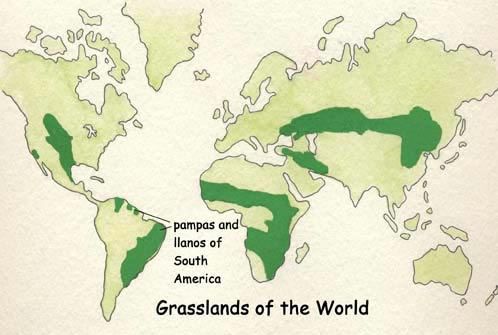
Argentina’s history also differs greatly from the countries we have passed thru so far. The early European arrivals found a present day Argentina that was sparsely populated and without any significant settled culture. The nomadic hunter–gatherer cultures that existed in the original “Argentina” were the Charrua, Minuane, and Guarani and mostly were found in present day Brazil, Paraguay, and Uruguay, only encroaching a little into what is now Argentina. The Guarani are notable, in that the language is the second official language of Paraguay, and is spoken by 70% of the inhabitants of Argentina in the areas bordering Paraguay. South of these areas, the piedmont had been mostly depopulated by a 2000 year drought a few millennia earlier, and apparently the dry, cold landscape did not generate any real desire to repopulate. The native population in the northwest (mostly in today’s Bolivia) had already been colonized by the Inca.

The Spanish landed at the Rio de la Plata, where Buenos Aries is now in 1512, first hearing of the “People of the Mountains” (the Inca), although the invasion of Peru would come later across Panama. A settlement where Buenos Aries is now was first attempted in 1536, but abandoned in 1541. The city itself was not finally established until 1580. Argentina, named wishfully after the mountains of silver (Argentum is latin for Silver) that did not exist was a part of the Viceroyalty of Lima, which seemingly did not make sense, until you realize that, until the early 1800’s Argentina was on the west coast of South America, with only a thin sliver of land connecting it to Buenos Aries. It included much of present day Bolivia and northern Chile. Thus, the importance of Argentinian General Jose de San Martin in the wars of independence in Peru and Ecuador can be explained. Between 1816 and 1900, Argentina would migrate, amoeba-like across the continent to become the Argentina we know today. Needless to say, a process like this was not without bloodshed.

The first stage in this transformation was the formation of the Viceroyalty of Rio de la Plata in 1776. It consisted of A lot of what is now Argentina, along with Paraguay, Uruguay, and a big portion of Bolivia. Unfortunately, Spain was already struggling by this time, with all the problems that would ultimately lead to the loss of its American empire, and the Viceroyalty was poorly supported.

Just like with all the other American colonies, the deposition of King Ferdinand in Spain was a catalyst for revolution. It is hard for us to imagine now, the worldview of the people of that time. Kings had gone from deities themselves, to being the appointed representatives of God on earth. Thus the removal of a King turned the whole world upside down. Although Napoleon replaced the old King with a new one, somehow being the appointed representative of Napoleon carried a lot less weight than God. Most of the population remained loyal to Spain. But, in their mind Ferdinand was Spain. After several abortive attempts at rebellion, the May Revolution in 1810 took root.

It is one thing to decide to rule yourself. But, for people who are totally programmed to be subjects of a king, self rule is easier said than done. First you have to decide what form of government you would have. A constitutional monarchy? A regency? A federation of semi-independent states, as in the new United States in North America? In the end, they decided on a name change, and the Viceroyalty of Rio de la Plata became the United Provinces of Rio de la Plata… What? Did you think the default of just picking a new name when presented with problems you cannot solve is something new? If they had computers, they would have produced a new logo to go with the new name.
The problem was, new name or new name, the provinces were anything but united. By 1816 Argentina was still a western South America province, with that long finger stretching out to Buenos Aries. A large part of what is now northern Argentina, about a third of Paraguay, and a small piece of Bolivia were under the control of indigenous people, who wanted no part of being ruled by Europeans (with or without a King), and the remainder of northern Argentina, Uruguay, and a hunk of Brazil had formed the Liga Federale, or the League of Free Peoples, aiming to form a federal government from the remains of the Spanish Viceroyalty.
General San Martin’s wars against Spain, and the civil war between the Federalists and Unitarians (who wanted to form one country and not a Federation), greatly expanded Argentina’s territory (nominally) over the next four years. It now owned most of Bolivia and Peru, as well as the former Liga Federale, and vast areas south of the erstwhile fingerlike connection to Buenos Aries. The tentative hold over all these disparate provinces explains why San Martin walked away from the Peru-Ecuador subdivision, leaving Bolivar to attach Guayaquil to Ecuador in that strange marriage we saw way back in Region 2. Argentina had problems of its own.

The Cisplatine War ended the nominal control over what is now Uruguay. Brazil took the supposed lawlessness of the Republic of Free Peoples as an excuse to try and expand it’s holdings and attacked Uruguay. The United Provinces responded and a costly, if inept war was fought between the two. In the end, public opinion and internal strife in both countries ended up forcing a most unusual route to peace. Both ceded their claims to the area in dispute, and the nation of Uruguay was born.
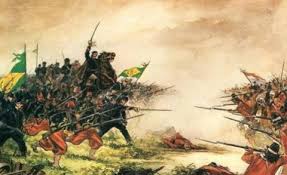
Meanwhile, out west, Simon Bolivar had come out of retirement to finish off the Spanish royalists in Peru. Following the final route of the last Spanish influence, the provinces of “Upper Peru” met to hold a vote. At issue was to: 1) join with Peru, 2) Join with the Federation of Rio de la Plata, or 3) Just form their own state. Peru and the Untied Provinces of Rio de la Plata said; “Have at it.”
It was fitting that the nation was named after Bolivar, since he opposed its independence and wanted it to remain a part of Peru. His dream of a united South America had fallen apart.
Unlike Bolivia, Paraguay had achieved defacto independence, which was not recognized by anyone except Paraguay. They had defeated the Untied Provinces forces on the ground, and managed to control most of their territory. But they were not recognized as an independent nation until Bolivia broke the ice in 1843. Additional recognitions followed, one by one. The one that finally assured their statehood was recognition by Brazil in 1844. Even Argentina recognized them in 1852.
Yes, Argentina. During 1831, amidst the ongoing civil wars (yes, they had time to fight amongst themselves even while fighting everyone else in sight) the surviving “United” Provinces of Rio de la Plata started calling themselves the Argentine Confederation. Along the way they had even established a border with Chile along the continental divide, thus having made the move from a Pacific state to an Atlantic state complete. In 1853 Argentina finally achieved a constitution, which is still in force today.

Of course, this was not the end of the incessant wars. In 1864 Brazil went to war with Uruguay. Uruguay’s ruling party was the Blanco Party, while the Colorado Party aligned with Brazil. A fifth of Uruguayans were Brazilian. And who did Argentina throw in with? Brazil. Needless to say this was a short war, lasting just over 6 months before the Blanco were defeated.

Unfortunately, off to the west was Paraguay, ruled by Francisco Soto Lopez. Maybe Lopez was insane. Maybe he was just a fool. Whatever the reason, he thought the Uruguayan War was the right opportunity to settle some simmering boundary disputes with Brazil… preferably by seizing the disputed territories. His efforts to come to the aid of Uruguay were thwarted by the fact Argentina lay between Paraguay’s armies and Uruguay. Needless to say, when the mismatched Uruguayan War was quickly over, Brazil turned to take care of the even weaker foe. I am not sure why, except for being pretty much under the Brazilian thumb, But Uruguay joined in. I reckon Lopez did not feel that he was sufficiently outnumbered, because he declared war on Argentina, who was uncharacteristically trying to sit out a perfectly good war. So then Argentina joined in to create the triple alliance. Paraguay, with a total population of 450,000 was facing three opponents, with a total population of 11 million and was in danger of being devoured on all sides, since Bolivia also had boundary disputes with Paraguay.
In addition, to the sheer numbers issue, Paraguay had limited military equipment (mostly provided by Brazil to defend Paraguay from Argentina) and no roads. The war began with Argentina neutral and Paraguay on the offensive. Surprisingly, Paraguay won some early battles. So, emboldened by the success, Lopez declared war on Argentina as well. I am thinking insane sounds better all the time. Paraguay continued with the early success until their Navy was destroyed by a combined Brazil-Argentina force. With no road, and control of the water lost, the outcome of the war was no longer in doubt. None the less, the war drug on for 5 more years before the last organized Paraguayan opposition was crushed. But, it still did not end there. Lopex took to the jungles, and fought a guerilla war that lasted another 14 months, before he was finally killed in 1870 putting an end to the hostilities.

The cost of the war to Paraguay was unimaginable. Over half the population dead, and such a high percentage of the men, that there were estimated to only be 28,000 living men in the entire country. Argentina and Brazil seized all of the disputed territory (about 140,000 square kilometers), and war reparations put most of the remaining land in the hands of foreign owners. Paraguay to this day remains the poorest country in South America.
After the almost surreal historical sequence that resulted in today’s Argentina, the history over the last century has been sadly similar to that of most of South America. Other than some small scale border disputes with Chile, Argentina seems destined to stay in place and no longer wander around the continent.
Outside the Pampas that we all associate with Argentina, it has a surprising geographic diversity. Aconcagua, at 22,841 feet the highest mountain outside Asia, is in Argentina. It has the Valdivian Rain Forest in the southwest. It has stunning colorful mountains of the Puna in the northwest. Most of Tierra del Fuego, with its bogs and tundra landscapes is in Argentina. But, Most of all, this country that was once landlocked on the west side of South America has 5,000 kilometers of seashore on the Atlantic Ocean.








But most of all, what Argentina has is cold desert. In northern Argentina and the remainder of the north of South America, the prevailing winds are east to west, leaving all those deserts that we traveled on the west side of the Andes in the rain shadow of the Andes. However, in the southern end of South America, the prevailing winds are west to east, leaving all of Patagonia in the Rain Shadow of the Andes. Lucky you. Rain is unlikely to cost you a single minute of travel time after Cali Colombia, as we swap sides of the Andes to stay in the Rain Shadow for the entire trip until we hit Terra del Fuego.




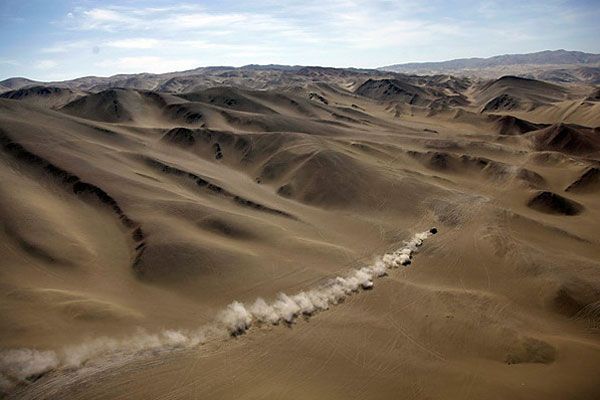



Given that Argentina is mostly desert and we all know that it is a major source of beef and leather, what else could it possibly produce? Naturally, Argentina holds more surprises. How about Argentine wine? Argentina is the fifth largest wine producer in the world, and has been a center of wine production for three centuries! How do you produce wine in a desert? Andean meltwater and irrigation.

The industrious Argentines are also among the world’s top producers of citrusfruit,grapes, honey, maize, sorghum, soybeans, squash, sunflower seeds, wheat, and yerba mate…


And what, you might ask (unless you are an Argentinian yourself) is Yerba Mate?

Yerba Mate is the national drink of Argentina. The consumption is almost ritualized, with special gourd cups and metal straws. Yerba Mate is also a popular drink among the Druze in the Levant (of all places), having been brought over by Argentine immigrants in the 19th century. Today it can be increasingly found as an ingredient in energy drinks, and even sold as a form of “ice tea.”
Naturally, the history of Yerba mate is inextricably tied to the history of Argentina. Mate is a wild holly tree indigenous to parts of South America. Mate leaves contain caffeine and Mate leaves steeped in hot water was a traditional drink of the Guarani Indians. When the Europeans settled the country, they also picked up the habit of drinking Mate. As the colonial colonies’ economies formed, Mate in Paraguay and Brazil was an important agricultural product. When Brazil turned to coffee production, Paraguay cornered the world’s market in Mate. Mate was a major part of the Paraguayan economy when Paraguay was one of the wealthiest countries in South America (Yes, Paraguay was once a wealthy country.) Then came the War of the Triple Alliance (remember that bit of insanity from the history section?). Following the war, Paraguay’s economy was destroyed, there were not enough surviving people to maintain the Mate industry, and (most importantly) Argentina had seized much of the prime Mate growing territory after the war. Brazil actually leads the world in Mate production today, with Argentina second.
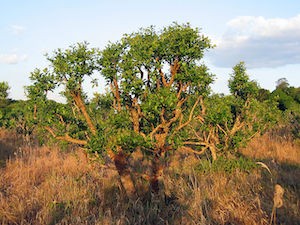
From its convoluted history to its surprising agricultural products and spectacular landscapes, Argentina has been a feast so far. What more could be of interest in this sere land?
Fossils. Deserts do more than produce fantastic scenery. They give visibility. Wind and sun erode away the exposed surface producing those fantastic sculptures, and they also reveal what is underneath. Without significant coverage by plants, the layers of the ages wear away instead of having new layers laid down on top. And what is revealed is readily visible. Now, we have been traveling across desert for thousands of kilometers, but that was on the west coast, where the exposed rock is fractured and crumpled by the collision of the South American Plate with the Nazca Plate. Much of the exposed rock is igneous rock produced by volcanic action. On the eastern side of the continent, it is very different. The layers of rock that have formed over millions of years are still there, in undisturbed layers. If you think about it; all of the great dinosaur fossil beds are found in stable land masses and in deserts; the Gobi in China and the Western North America. In Argentina’s great deserts the eons have worn the surface away down to the Mesozoic Era… the age of dinosaurs. Dinosaur fossils can be dug up almost anywhere, but the treasure troves are to be found in deserts. Argentina continues to contribute new and spectacular species and a wealth of knowledge about that fascinating time in the history of the earth.






Leaving the security of Socompa you need to be certain you have adequate supplies, especially water, as you are entering the high altitude Puna Desert. If you ever wondered what it would be like to visit another planet, Puna is probably the closest you can possibly get. Very little oxygen, bitter cold, and landscapes that look like something from the imagination of a madman. If it were not for the existence of the road you are on, it would be easy to imagine no human had ever been this way before.


60 kilometers from Socompa you will come to the salt flats of Lago Salar de Arizaro.
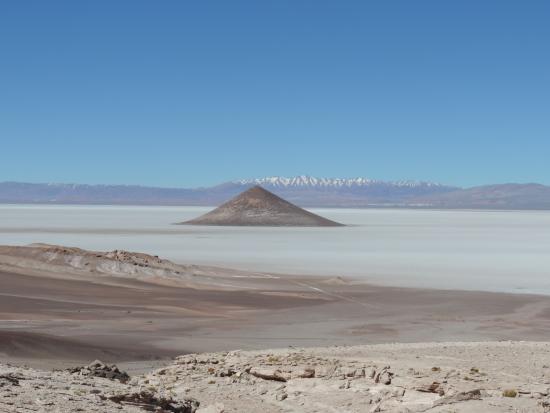
Another 140 Kilometers (1,090 kilometers into the region) takes you to another salt flat (Salar del Antofalla) and a spring of water that is possibly not potable.

90 kilometers of mountain desert running later, you will reach the tiny village of Antofagasta de la Sierra. 1,180 kilometers into the region it has been 730 kilometers since you last passed thru a city.

210 kilometers after Antofagasta you will hit Hwy 40. Maybe you thought you hated pavement before you started your trip around the world. I will bet that you are ready to weep with gratitude by the time you hit the first pavement you have seen in 760 kilometers!

After you finally hit pavement the pace of civilization quickens, with both actual “running” water in a rio (at this point your standard for a rio will be much more flexible than it was before you hit Chile) and at 1410 kilometers… a hotel and a restaurant. A bath, a hot meal, and a bed will never be more welcome.


From here you will make your way across middle Argentina; wide, green valleys between mountains, small to mid size cities, lots to see and people to meet. You will have many miles to enjoy getting to know Argentina.
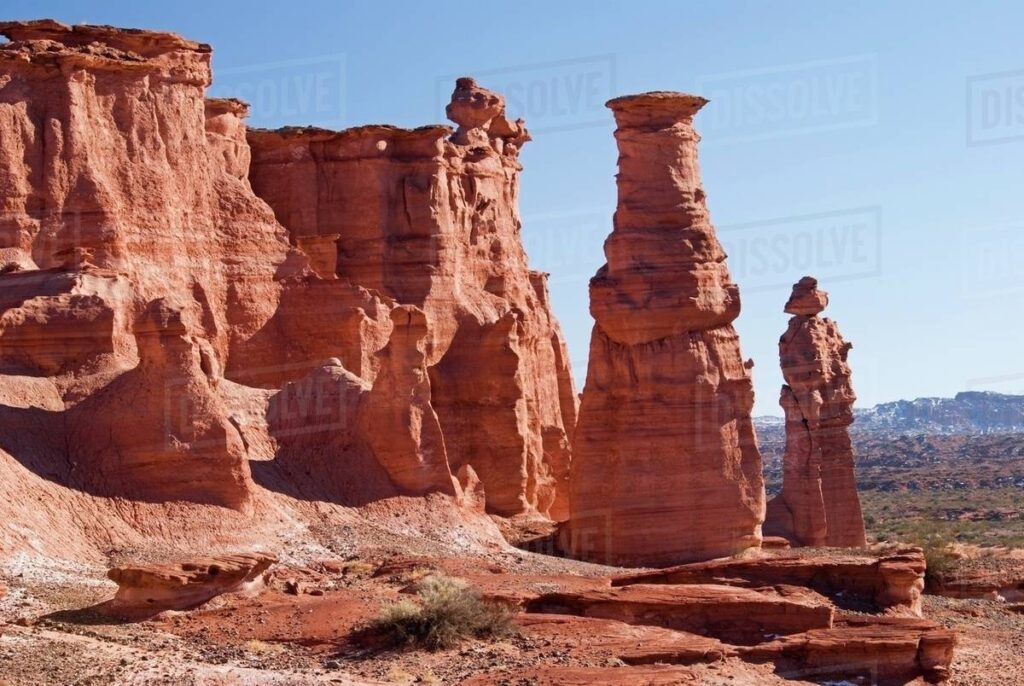







Your trip thru Middle Argentina is a 1,690 kilometer adventure that ultimately takes you to the Atlantic Coast. For all that you have seen and done, you still have a 2000 kilometer trip down the Atlantic Coast ahead of you.
You will know the beach is close. You will be able to smell the ocean. But, unless you take a side trip to see it, the sea will play with you as you make your way down the endless flatness of the coastal plain. Always there, but never in sight as you cross marshland and vast empty plains and pass thru the tiny towns that serve the ocean tourist trade, the unseen sea will be an invisible companion for nearly 800 kilometers, until one day you round a curve on the way into Comodoro Rivadavia, and there it is.




Once we have reached the ocean, it seems that we should stay there. For the next 100 kilometers you will have an unchanging view: the ocean on one side, the desert on the other.


Where you leave the ocean, the coast of Argentina bulges out like a monstrous tubercle on the continent. Your road cuts across the base of that tubercle in another mind numbing stretch of sameness. By this point you are far enough south that the desert winds are biting cold, cutting you to the bone.
Some people complain about these sorts of stretches in a transcontinental journey. I find them equally as awesome as the calendar scenery of the mountains. There is majesty in the emptiness. There is a sense of vastness of scale that can only be absorbed by experiencing it at the molecular level; an awareness of your own insignificance that is driven home by each succeeding footstep. For more than 300 kilometers the scene in front of you is unchanging, broken only one, when you reach the speck that is Tres Cerros. Three hills in Spanish, you will be left to ponder how this place got its name for some 200 miles. Because, if there is any hill in Tres Cerros it is an anthill.


As you pass the little resort town of Puerto San Julian, you are now 4,200 kilometers into the Region. Once again, you are so close to the ocean that you can smell it, but unless you take a side trip, you will never see it. But, if you can just stay patient for another 440 kilometers, you will come in view of the Estrecho de Magallanes at 2640 kilometers, and will be waiting on the ferry at 4,670. Those 440 kilometers consist of one grinding stretch of sameness after another, broken only by river crossings and passing by the cities of Comandante San Luis Piedrabuena and Rio Gallegos. I suggest that you leave the bypassing route and go thru the center of each of those cities, taking advantage of the opportunity to eat in a restaurant and spend the night in a hotel. You can, of course, have your crew vehicle drive you over and back, but we would allow you to run through the center of town and return to the course at the other end. It is a few kilometers longer, but what are a few kilometers in a 5,000 kilometer region anyway? Besides, we want you to get the most from your trip and running or riding through these south Patagonian cities is not an opportunity that comes up every day.





Between Rio Gallegos and the Estrecho des Magellanes you will have to cross the border into Chile, because the strait is in Chilean territory. This is a pretty easy crossing, with a single building at the border. There is no extensive search of your luggage, but if you remember from crossing into Chile from Peru (a lifetime ago) Chile is very particular about bringing in food. Before you get to the border get rid of any foods that you have, and then declare food at customs anyway, just in case you missed something. They will have sniffer dogs to detect anything that might still be in your luggage or on your person.

Once you are in Chile you will want to move along quickly to recross the border in San Sebastian. It is 270 kilometers between you and the next place to eat, and you have no food! If you cannot make it 270 kilometers between meals, there is Restaurante La Ruta outside Cerro Sombrero after 80 kilometers and on the other side of the ferry, but it will require a detour to reach it.

Crossing back into Argentina at San Sebastian, the two border stations are 15 kilometers apart. The first one you come to is the Chile exit station.

Run, ride, in line skate, or cross country ski to the stop sign… stop and go inside. Provide your passport to the immigration officer and he will stamp you out of Chile (again). Proceed to Aduana and give your passport to the Customs official, he will review it and tell you that you are done. This stop should be done in 10 minutes. You will be glad because you will be really hungry by now! Proceed the 15 kilometers to the Gendarmeria Nacional Building in San Sebastian.

Stop at the Stop sign and go inside. First go to Immigration, where you will give your passport and proof of Reciprocity payment. I fear that we failed to mention this before your first crossing from Chile, because of the remote border crossing. But, US citizens are required to pay a $160 fee to enter Argentina, and it cannot be paid at the border. You must arrange this with an Argentine Embassy in advance, but you should have already taken care of this before crossing from Chile at Socompa about 4,000 kilometers ago. The Officer will probably ask you some questions about your visit (especially if you are on in-line skates or cross country skis) but will eventually stamp your passport and also stamp a piece of paper for you. Then go to Aduana, give them your passport and do the customs thing. On the bright side, you will not have to worry about declaring any food items! The Aduana Officer will stamp the same piece of paper the Immigration Officer stamped for you. As you leave a military guard will stop you and ask for the piece of paper that was stamped by Immigration and Aduana. If you did not toss it in the trash you are free to go to Argentina and get something to eat!

There is nothing in San Sebastian; it is another 80 kilometers to Rio Grande, where you will finally get to stamp out the fire in your belly.

Rio Grande is 4,910 kilometers into Region 3. You now have only 200 more kilometers to reach your Dornier flight to the Federal Republic of Antarctica. You can expect to cover that distance in a mix of sun, rain, snow, and wind; possibly all in the same day. You will be cold. Expect it. But, you will be rewarded with a stretch of unmatched rugged beauty. At the end of the road you will come to Ushuaia, the southernmost permanently inhabited city on earth. There you can get one last night with the trappings of civilization, before taking off in the Dornier for your flight to the Federal Republic of Antarctica. This time all the technicalities of Immigration and customs will be taken care of during your flight.








Laz, these country travel guides are so frigging amazing! They should replace all history and geography books in schools with your travel guides. Love it!
Aconcagua, the highest mountain in both West and South hemispheres, worth adding couple words.
The small picture in the guide is not quite Aconcagua. It is taken from south point of its summit plateau, and it shows South Spur.
I know this from fact. Here is picture of Yaroslava of team EH to ZED, I took the picture from the same spot, less than three years ago.
Aconcagua from Mendoza – Santiago plane
More of Aconcagua, from East (Polish Glacier).
There is a metal cross on Aconcagua summit. The cross has Ten Commandments engraved on the vertical beam. “Heaven” engraved on the right arm, “Hell” on the left.
Not sure why, but the “Hell” arm points to the way to camps, while “Heaven” directs to a cliff, about 500 m high. I didn’t get this symbolism.